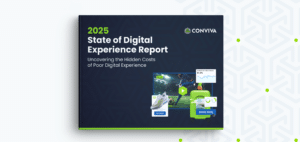What’s the key demo? Are we getting the 18-39 audience? Are women less interested in this program than men?
These are the types of questions media companies have always asked as they try to understand the audiences that consume their content. The act of breaking viewers into smaller groups based on categories like age, gender, and location is known as segmentation. But in the modern era of streaming, there is the opportunity for segmentation based on actual behavior.
In a recent webinar, ARF Audience X Science 2022: Why Behavioral Segmentation is Crucial for Streaming Platforms, Conviva Chief Marketing Officer James Lamberti discusses how streaming lets media companies segment their audiences based on behaviors like when they watch, what they watch, or how much they watch. The webinar explores how behavioral segmentation translates into gaining and retaining more subscribers, and why streaming presents opportunities to understand audiences like never before.
Why is streaming different from other modes of media?
In the olden days of broadcast, media companies were limited in the types of information they could collect on their viewers. For the most part, a network could only really rely on surveys to understand how many people were watching their program. But in the streaming age, media companies can glean far more insights into the viewing experience.
Streaming services can now gauge what their viewers watch, how long they watch it, what problems they face during the process, which devices they use, where they like to watch, average viewing time, abandonment patterns, and binge-watching habits—among many, many more metrics at the census level. Each of these metrics describes a specific streaming behavior, hence the term behavioral segmentation.
“When we talk continuous, we’re talking about the comprehensive, census-level, full experience of everything that’s happening in that viewer’s world. And all of that data can be merged into how you do segmentation and behavioral analysis.” – James Lamberti, CMO of Conviva
Media companies can now segment their audiences based on how they watch content, and not just whether they watch it. This is useful as they transition from companies who are just selling time to advertisers into companies that are selling their service to customers. Understanding viewer behavior is the most powerful tool that publishers have for growing and engaging their audiences.
Why is behavioral segmentation groundbreaking?
Firstly, let’s consider the customer lifecycle. This is the series of actions that lead to dedicated and long-lasting customers on your streaming platform. The customer lifecycle breaks down as follows:
- Building marketing campaigns
- Measuring success
- Converting trials to subscriptions
- Maintaining engagement month over month
- Promoting new content
- Preventing churn
So where does behavioral segmentation fit in? Streaming services can support all aspects of the lifecycle by clustering viewers by the content they watch, when they watch it, and how they watch it.
“When you’re planning, you can now know exactly what are my high viewer segments? Where do I have pockets by device type? Where do I have pockets by the type of content they enjoy? What are the segments around average length of viewership? All of that can help you build a campaign so you’re matching the content to the type of audience, and then marketing around that.” – James Lamberti, CMO of Conviva
From there, streamers can comprehensively measure the viewer experience in real-time, making daily or even hourly adjustments to how they manage segmentation and communicate with viewers.
Build a marketing campaign to drive people to your application
Once you understand who makes up the core audience of a certain type of content, you can use this segment data to plan for the future. These insights can help you determine what future content will be appealing to each segment, guide your media spend, plan creative around the segment’s taste, and leverage the segment’s interests to lead them to other available content.
Content pathing is another key factor when it comes to keeping audiences engaged. Pathing reveals what viewers of a particular show watched just before or just after that program. Understanding these patterns will allow you to suggest the most relevant content to viewers who are approaching the end of their program, keep them on the app longer, or even make full-time subscribers out of trial users.
“All of these are some of the behaviors we’re seeing in the streaming world that are continuous in real-time, and in a richer, deeper, more complex way than we have ever historically been able to do in any other form of media.” – James Lamberti, CMO of Conviva
Keep subscribers engaged
Behavioral segmenting is not just practical for bringing new users onto your app. It can also be utilized to retain and activate subscribers. For instance, if the second season of a program is about to premier, you can create a segment based on subscribers who watched Season One. Then, you can use marketing tools like email, in-app recommendations, and targeted advertisements to redirect members of that segment back to the show they once enjoyed.
“Informing what you promote, what you syndicate, or what you create—and then how you market it—based on how you segment viewership and behavior is a much better way to build a business successfully.” – James Lamberti, CMO of Conviva
Bottom line
If you’re ready to segment viewers based on their behavior, look no further than Conviva. Conviva’s technology supports publishers in making data-driven decisions by surfacing robust, first-party behavioral data based on actual content consumption, with the ability to layer on demographic data.
That means you can combine the immense benefits of behavioral segmentation with traditional datapoints like age, gender, and location. Altogether, Conviva can help your streaming business understand your audiences in-depth, and use that information to create the most engaging and relevant streaming experiences for them.
To learn more about the best practices around data-driven decision making in the streaming world, check out the ARF Audience X Science 2022: Why Behavioral Segmentation is Crucial for Streaming Platforms webinar.





